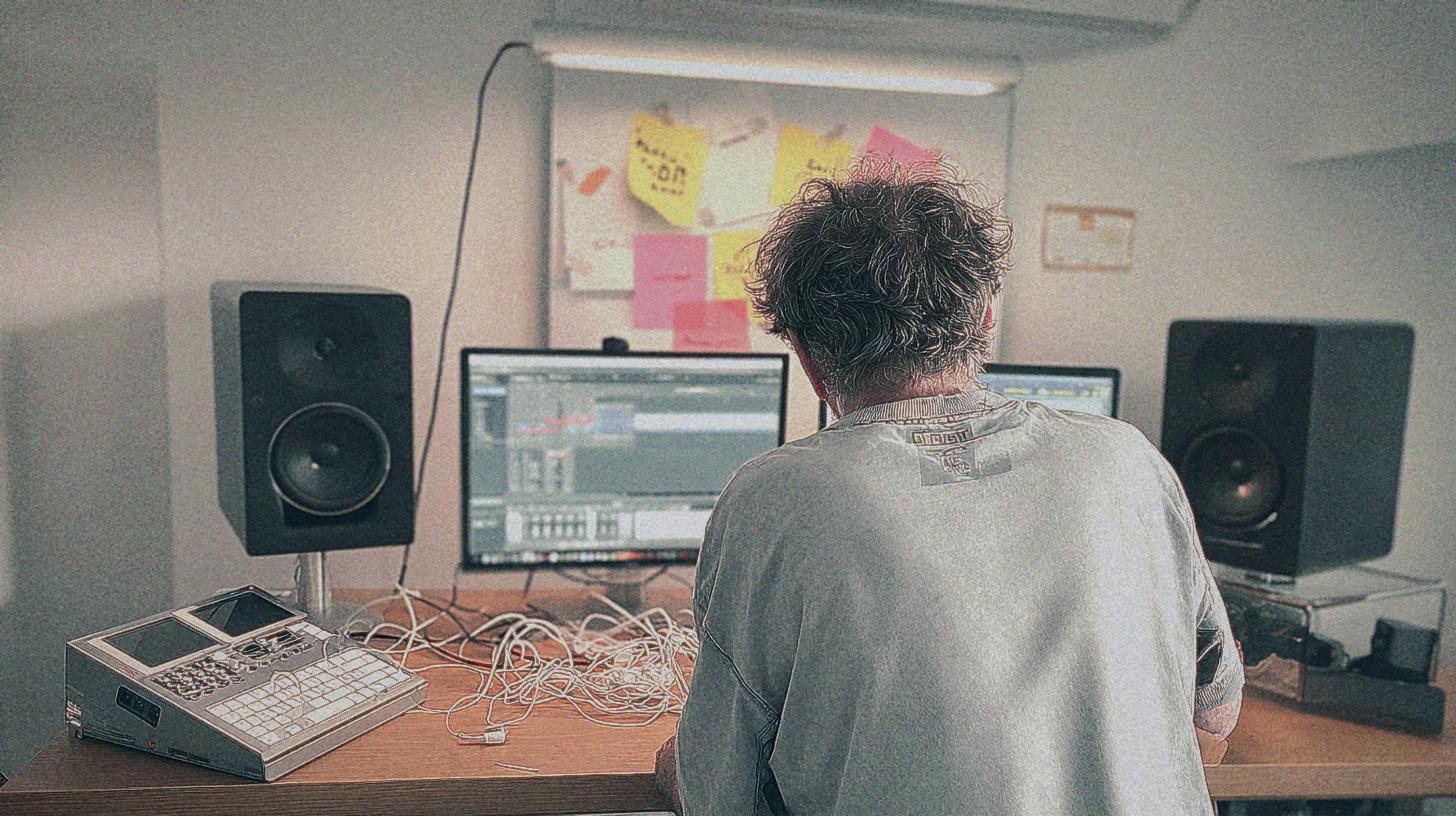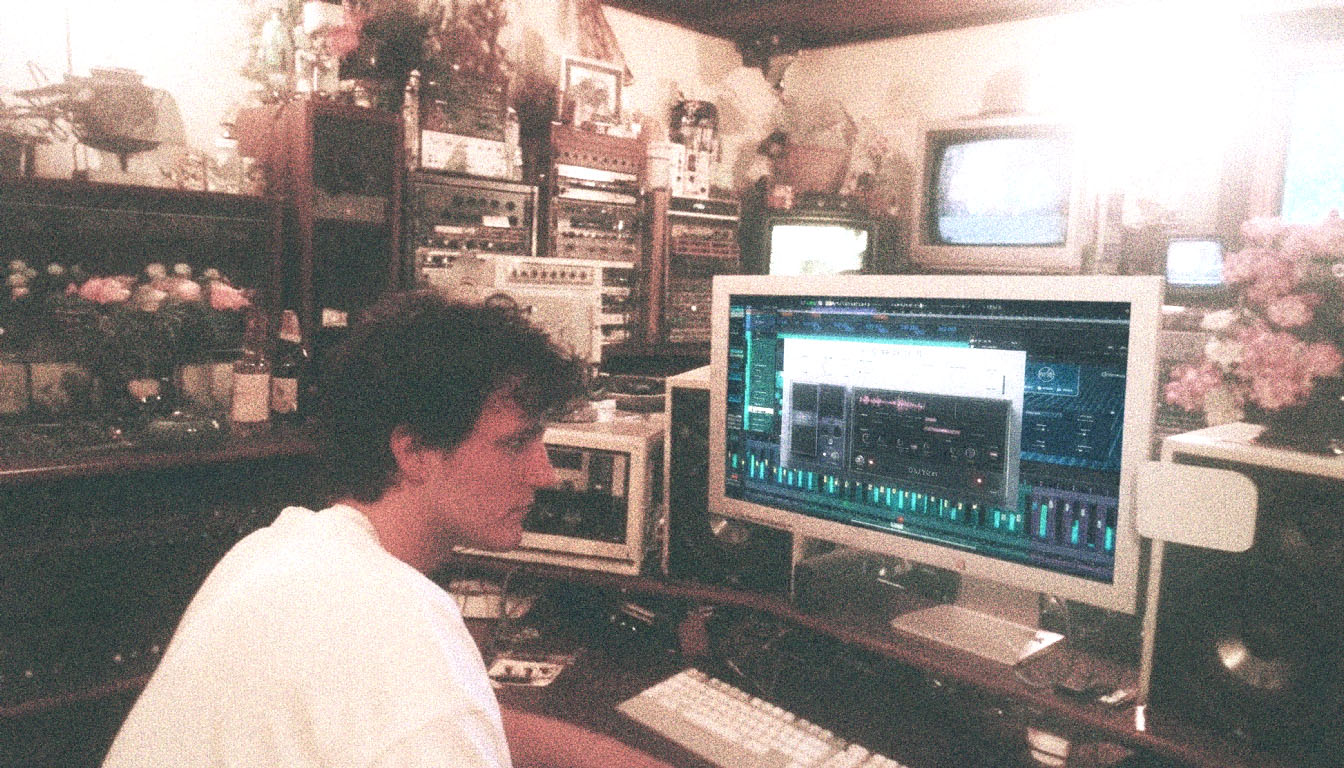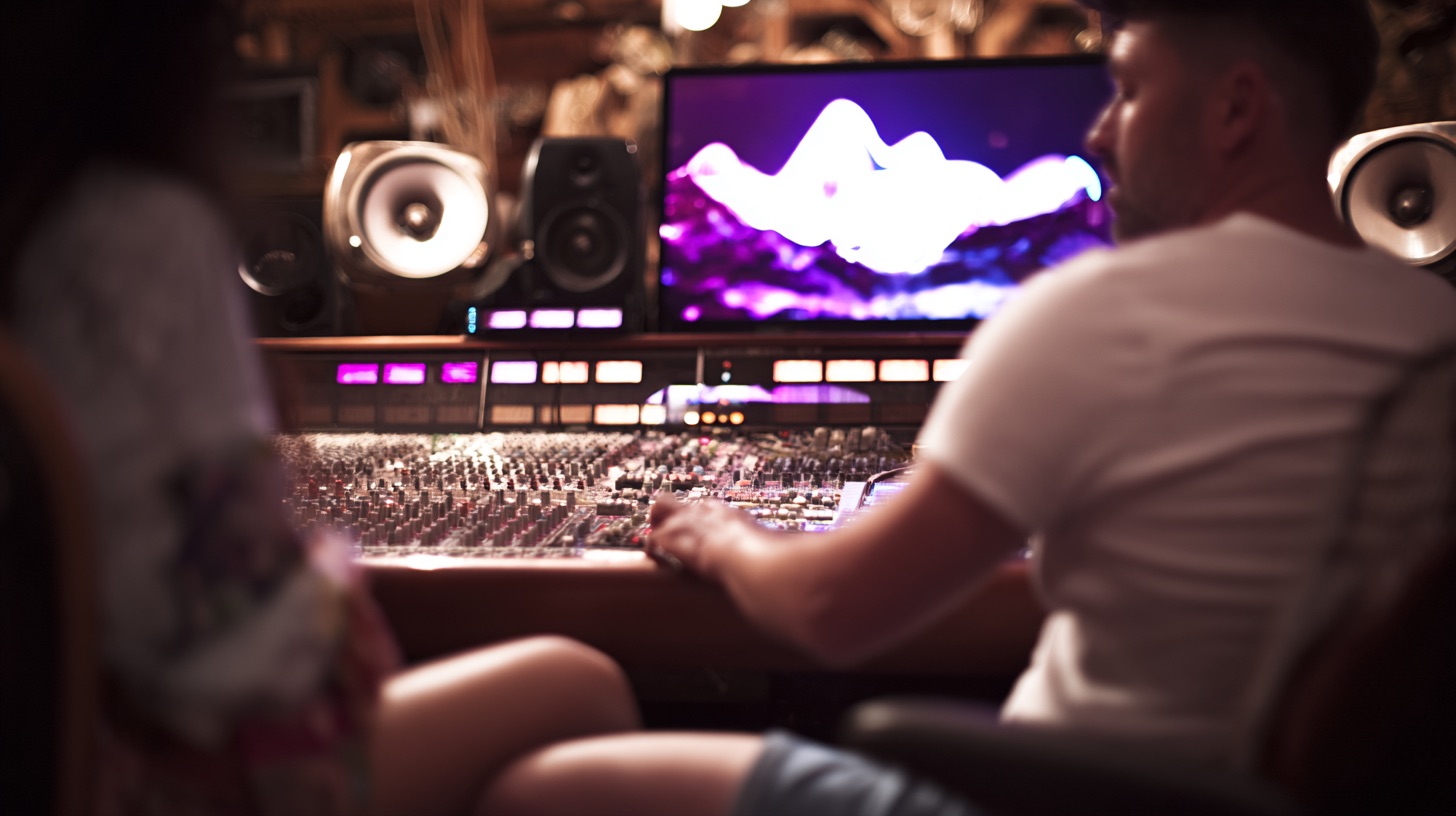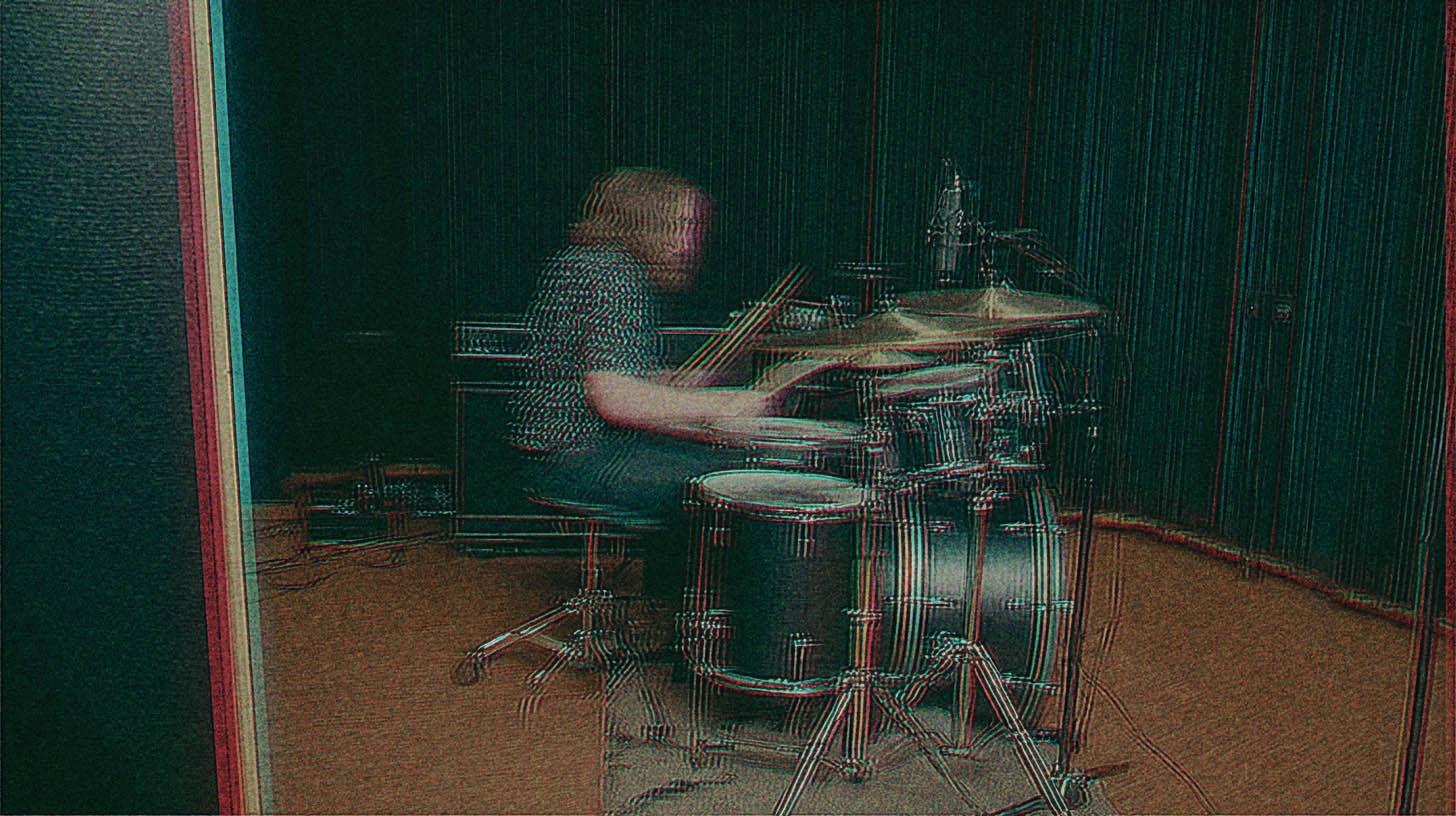
Mesa Boogie Amps: Taming the Beast for Low-Tuned Guitars
Nail The Mix Staff
Mesa Boogie. The name alone conjures up images of seismic guitar tones, from the searing leads of Petrucci to the crushing rhythms that have defined metal for decades. Amps like the Dual Rectifier and the Mark Series are legendary for a reason – they deliver power, aggression, and a character that’s unmistakably heavy. But in a world where guitar tunings are dropping lower than ever, how do you make these iconic amps work for modern metal without turning your mix into a muddy mess?
It’s not just about plugging in and cranking the gain anymore (was it ever really that simple?). Getting a killer Mesa Boogie tone, especially with guitars tuned to Drop C, Drop A, or even lower, is an art form. It's about understanding the amp, your guitar, and the crucial post-processing needed to make it sit right. This is the kind of deep dive into tone-crafting we live for at Nail The Mix, and today we're tackling the mighty Mesa.
The Mesa Boogie Legacy: More Than Just Recto Roar
Before we dive into the low-tuned madness, let's give credit where it's due. Mesa Boogie didn't just stumble into the metal scene; they helped build it. The Dual and Triple Rectifiers became synonymous with 90s and 2000s metal, offering a saturated, scooped, and undeniably huge sound. Think of that tight, percussive low-end and searing high-gain that could level buildings.
Then you've got the Mark Series (like the Mark IV and Mark V), often favored for their tighter response, complex midrange, and articulate gain structure. These amps are chameleons, capable of incredible versatility but absolutely excelling at focused, aggressive metal tones. Their built-in graphic EQs offer a ton of shaping power right at the source.
These amps became staples because they brought the firepower. But as music evolved, so did the demands placed on them.
Low Tunings: The New Standard and Its Challenges
Remember when Drop D felt super aggressive? And then Drop C was like, "Woah, that's insanely low!" Nowadays, Drop C almost feels like a new standard tuning for many metal subgenres. We're seeing bands in Drop A, F#, even E on 8-string guitars. This isn't about "ruining music" by tuning lower, as some old-school purists might have said; it's about exploring new sonic territories. The truth is, "low" is a purely relative concept. What truly matters is writing the best possible parts for the tuning you're in.
When I was working on the "Avalanche of Worms" instrumental album back in 2009, we tuned a 6-string to F-F-C-F-A-D. The low F octaves sounded incredible and unique for the time, but man, it was a battle. We didn't have baritone guitars or easy access to 7-strings that were well-suited for it. Staying in tune was a nightmare, and fretting notes cleanly without them going sharp or flubbing out was a constant struggle. We were fighting gear that wasn't designed for such extremes.
This highlights the core challenges of ultra-low tunings:
- Definition: The lower you go, the harder it is to get clarity from your strings, especially the lowest ones.
- Low-End Buildup: Those seismic low frequencies can quickly turn into uncontrolled mud in a mix.
- Intonation & Tuning Stability: Standard scale lengths and hardware often struggle to keep super slack strings in tune and intonated correctly.
Simple, percussive riffs and breakdowns often feature prominently with low-tuned guitars because, frankly, they sound immense and are incredibly fun to play. That earth-shaking power from a low F# or E power chord on an 8-string is undeniable. But that power needs to be harnessed.
Dialing In Your Mesa Boogie for Extreme Lows
So, you've got your Mesa Boogie, you're tuned down to something subterranean, and you want to make it sound epic, not like a dumpster fire. Here’s where the fun begins.
Amp Choice: Which Mesa for the Chugs?
- Dual/Triple Rectifiers: These are probably what most people think of. Their inherent low-end thump is massive, but with super low tunings, you'll need to be very careful with the bass knob. The "Modern" high-gain modes are where the aggression lies.
- Mark Series (IV, V, JP-2C): Often considered tighter and more focused than Rectos. The graphic EQ is your best friend here for sculpting the mids and taming unruly lows before it even hits a microphone. The Mark V's channel modes offer a huge palette, with Modes like "Extreme" on Channel 3 being particularly potent.
- Badlander: A newer offering from Mesa, specifically voiced with modern, down-tuned players in mind. It's designed for clarity and punch even with extended range guitars.
The Critical Role of Your Guitar and Setup
Your amp is only part of the equation. What you plug into it matters immensely.
- The Right Axe: For serious low tunings, you’ll benefit hugely from a guitar built for it. This means baritone scale lengths (26.5″ to 28″ or even longer) or 7- and 8-string guitars (like my Kiesel 8-string). These provide better string tension, which means more clarity and better tuning stability.
- Evertune Bridges: If you're serious about low tunings and recording, an Evertune bridge is practically a cheat code. It's a godsend for maintaining perfect tuning and intonation, regardless of how hard you pick or changes in temperature. A lot of tuners struggle to accurately register super low notes, and even when they do, your picking attack can easily knock a note sharp by 10-15 cents or more. Bassists often tune their instruments slightly flat to compensate for this "pick sharpness." With low-tuned guitars, it's a similar issue, but an Evertune largely solves it. Some folks talk about an "Evertune tone tax," but with fresh strings, I think they sound fantastic. Bending feels different, yes, but for rhythmic precision, it's unparalleled.
- Pickups & Strings: Don't neglect these. High-output pickups designed for clarity (like Fishman Fluences, Bare Knuckle Pickups, or Lundgren M-series) can make a huge difference. Use appropriate string gauges – you need enough tension to avoid floppy, undefined notes.
Amp Settings That Actually Work (Not Just Everything on 10)
Forget just diming the gain on your Mesa. That’s a fast track to a fizzy, undefined mess, especially with low tunings.
- Gain Staging is Key: Often, less amp gain is more. Try your Mesa’s gain around noon or even less (say, 4-6 on the dial). Where does the extra saturation and tightness come from? A boost pedal!
- The Classic Tube Screamer (TS808/TS9): Drive at 0, Tone to taste (often around noon or slightly higher), Level at max. This tightens the low-end and pushes the mids, helping your Mesa cut.
- Modern Boosts: Pedals like the Fortin Grind, Horizon Devices Precision Drive, or Pepers' Pedals Dirty Tree are specifically designed for this, offering more EQ shaping and aggression.
- EQ on the Amp – Your First Line of Defense:
- Bass: On a Rectifier, you might be shocked how low you set this. Try it at 9 or 10 o'clock, especially with a boost pedal. Let the boost handle some of the low-end shaping. On a Mark series, the graphic EQ gives you finer control.
- Mids: Crucial for definition and preventing your guitar from sounding like a blanket. Don't instinctively scoop them to oblivion on the amp. For a Recto, try mids around 1-2 o'clock. For a Mark, use that graphic EQ to find the sweet spots that help the guitar speak.
- Treble & Presence: These control the bite and air. Too much, and you get harsh fizz. Too little, and it's dull. Find the balance. Start around noon and adjust.
- Channel Voicings: Experiment! On a Dual Recto, the "Modern" voicing on the Red channel is a common starting point. On a Mark V, "Extreme" or "Mark IV" modes are popular for heavy tones.
Example Starting Point (Dual Recto, Red Channel, Modern Voicing, with a TS-style boost):
- Boost: Drive 0, Tone 6, Level 10
- Amp: Gain 5, Treble 6, Mid 7, Bass 3-4, Presence 5 (adjust all to taste and depending on your guitar/cab!)
Post-Amp Processing: Sculpting That Mesa Tone in the Mix
Okay, you’ve got a killer sound coming out of your Mesa Boogie and into your DAW via your favorite mic (or IRs like the Celestion-loaded OwnHammer or York Audio impulses). Now the real work begins to make it fit into a dense modern metal mix. This is where you apply layers of control, much like producers such as Buster Odeholm do to get those incredibly tight and articulate low-tuned guitar tones.
Aggressive EQ for Clarity and Punch
Your Mesa is putting out a lot of information. EQ is about carving away what you don’t need and enhancing what you do.
- High-Pass Filter (HPF): Absolutely essential. You’ll want to cut out all the sub-low rumble that does nothing but eat headroom and clash with the kick and bass. Start around 80-100Hz and go higher if needed, especially for ultra-low tunings. Listen in the context of the mix.
- Tackling Mud & Boxiness: The 200-500Hz range is often where mud accumulates. Gentle, wide cuts here can clean things up significantly. Boxiness can sometimes live in the 400-800Hz zone.
- Boosting Attack & Definition: The "bite" of your pick and the articulation of your notes often live between 1.5kHz and 5kHz. Careful boosts here can help the guitar cut through without becoming harsh.
- Cutting Fizz: Just like with any high-gain amp, Mesas can produce some high-frequency "fizz" or "sizzle" that sounds unpleasant. Use a narrow Q on your EQ to find these offending frequencies (often 6kHz-10kHz or even higher) and notch them out.
For a deeper dive into these concepts, check out our EQ Strategies for Mixing Modern Metal Hub Page.
Taming Dynamics with Compression
Compression can help even out the performance and make your Mesa tones more consistent and impactful.
- Multi-band Compression: This is a secret weapon for low-tuned guitars. You can independently control the dynamics of different frequency bands. For instance, you can heavily compress the low-end "chug" (e.g., below 200Hz) to keep it tight and consistent, while letting the midrange and highs breathe a bit more for attack and clarity. Plugins like FabFilter Pro-MB are incredible for this.
- Overall Compression: A little bit of overall compression (e.g., with a VCA-style compressor like an SSL G-Comp emulation or even something like a Distressor emulation) can glue the sound together and control peaks. Aim for a few dB of gain reduction on the loudest parts.
Learn more about making your guitars hit harder with our Metal Compression Secrets Hub Page.

100+ Insanely Detailed Mixing Tutorials
We leave absolutely nothing out, showing you every single step
Advanced Techniques: Multi-Band Distortion and Blends
To get truly surgical, like some of the top modern metal producers:
- Multi-Band Distortion/Saturation: Apply different types or amounts of distortion to specific frequency bands. Want more aggressive midrange grind without making the low-end flubby? Multi-band saturation can do that. This allows for incredible tonal shaping beyond simple EQ.
- Blending: Don’t be afraid to blend tones. Maybe you blend your miked Mesa with a carefully chosen amp sim that fills in some frequencies. Or blend different mic positions or IRs.
Low Tunings and Mesa Boogies: It’s All About Control
Playing super low-tuned guitars through a high-gain monster like a Mesa Boogie is like wielding a powerful weapon. It’s exhilarating, and the sonic impact can be immense. But without control, that power will overwhelm your mix and turn everything into an undefined roar.
Think of low-tuned guitars as occupying a different sonic space, almost like a cello or even a bass-guitar hybrid within the guitar's range. They have a different function than a standard-tuned guitar. You can't just treat them the same way.
The key is a meticulous approach:
- Start with the right foundation: A well-setup guitar for low tunings (baritone, multi-scale, Evertune).
- Dial the amp intelligently: Less gain, smart EQ, and often a boost pedal.
- Sculpt aggressively in the mix: Surgical EQ, dynamic control (especially multi-band compression), and potentially advanced saturation techniques.
It’s not just about finding a preset and calling it a day. It’s about layers of fine-tuning at every stage.
Want to Master These Techniques?
Feeling like this is a lot to juggle? It can be. But seeing how seasoned pros wrangle these aggressive tones, deal with problematic frequencies, and make everything sit perfectly in a mix is a game-changer.
At Nail The Mix, we bring you into the studio with the world's best rock and metal producers. Every month, you get the actual multi-tracks from a real song by a major artist, and then you watch the original producer mix it from scratch, explaining every plugin, every fader move, and every decision they make. Imagine seeing them tame a wall of Mesa Boogie guitars, dial in crushing low-end, and make it all punch through with clarity.
If you're ready to go beyond presets and truly understand how to craft professional metal mixes, from tracking to mastering, then it's time to Unlock Your Sound with Nail The Mix. Join our community, get access to exclusive plugins, and learn directly from the producers behind the albums you love.
Get a new set of multi-tracks every month from a world-class artist, a livestream with the producer who mixed it, 100+ tutorials, our exclusive plugins and more
Get Started for $1





